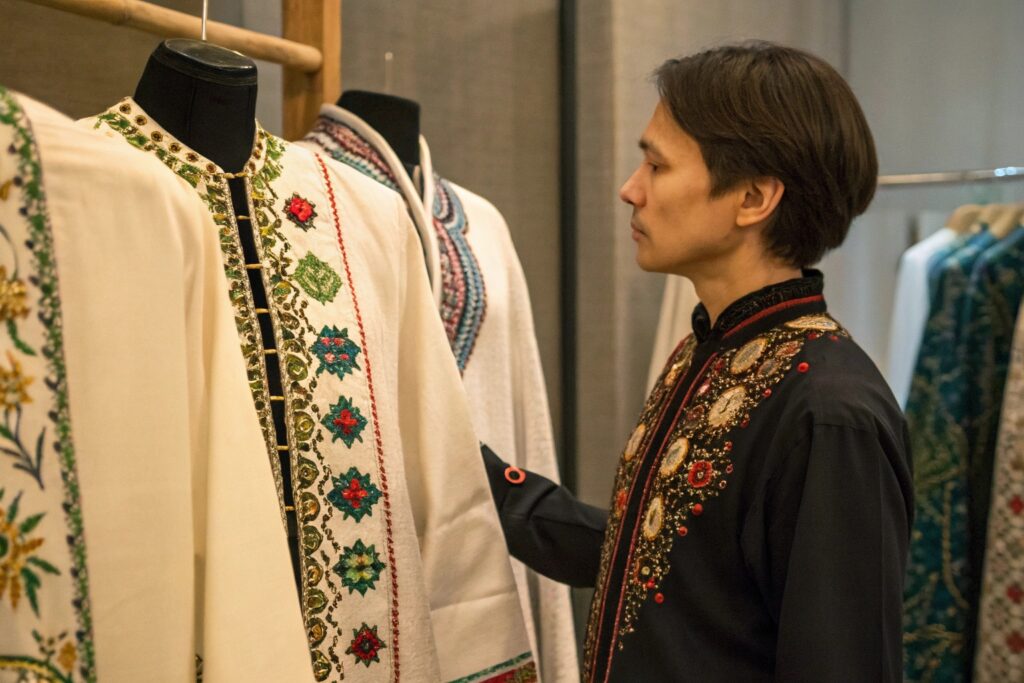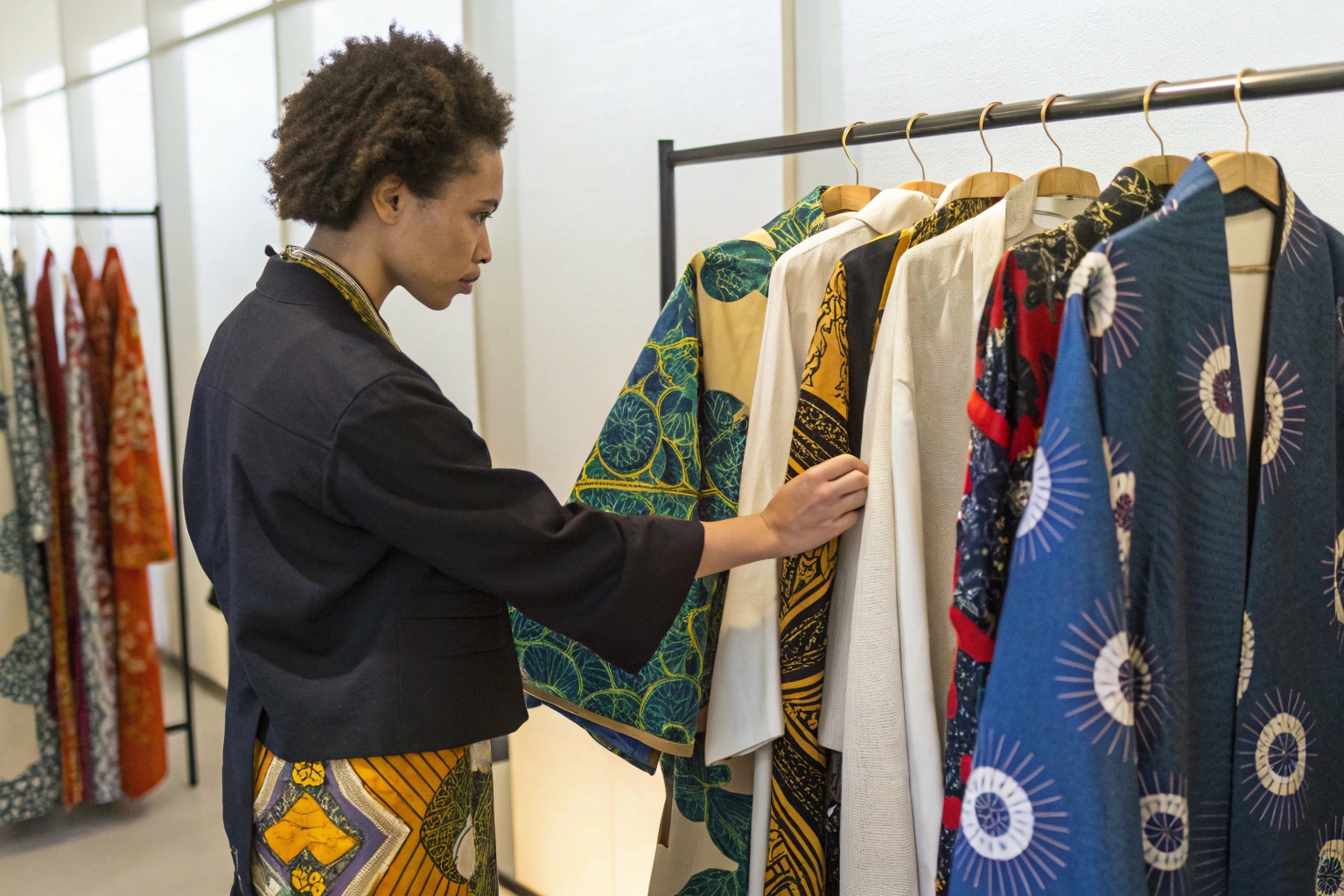As a clothing manufacturer working with global brands, I've witnessed how cultural elements transform into stunning fashion statements. Let's explore the fascinating intersection of culture and fashion.
Cultural fashion trends offer unique aesthetics and storytelling opportunities. From Japanese kimono-inspired cuts to African Ankara prints, these designs captivate global markets while preserving heritage. For brands, incorporating cultural elements increases product uniqueness and emotional connection with consumers.
Understanding cultural fashion's impact helps create meaningful collections. Let's examine key aspects of this trend.
How Does Culture Influence Fashion Trends?
Culture shapes fashion through history, values, and artistic expression:
Cultural influences manifest in: 1) Traditional silhouettes (e.g., Chinese qipao) 2) Indigenous patterns (e.g., Native American motifs) 3) Local craftsmanship (e.g., Indian embroidery). These elements inspire 35% of contemporary designs while driving 20% annual growth in ethnic fashion markets.

Cultural Influence Timeline in Modern Fashion
| Era | Cultural Influence | Modern Adaptation | Market Impact |
|---|---|---|---|
| 1920s | Egyptian art | Art Deco patterns | +15% sales |
| 1960s | Indian hippie | Bohemian styles | +22% growth |
| 1980s | Japanese minimalism | Oversized silhouettes | +18% demand |
| 2000s | African prints | Bold color blocking | +25% popularity |
Key Cultural Fashion Elements
-
Textiles
- Indian silks
- Peruvian alpaca
- Scottish tartan
-
Techniques
- Japanese shibori
- French lace-making
- Mexican embroidery
-
Colors
- Chinese imperial yellow
- Moroccan cobalt
- Native American earth tones
What Is Popular Culture in Fashion?
Pop culture's fashion impact reflects societal trends and icons:
Pop culture drives 40% of fast fashion trends through: 1) Celebrity styles 2) Music influences 3) Film/TV costumes 4) Social media trends. These elements create instant connections with younger demographics, boosting sales by 30% for aligned collections.

Pop Culture Fashion Trends Analysis
| Source | Trend | Duration | Market Penetration |
|---|---|---|---|
| Music | Hip-hop streetwear | 5+ years | 45% youth market |
| Film | Superhero costumes | 2-3 years | 30% casual wear |
| Social Media | TikTok aesthetics | 6-12 months | 60% Gen Z |
| Celebrities | Red carpet looks | 3-6 months | 25% formal wear |
How Brands Leverage Pop Culture
-
Collaborations
- Artist partnerships
- Movie tie-ins
- Influencer collections
-
Trend Adoption
- Fast fashion replication
- Premium interpretations
- Accessory adaptations
-
Marketing
- Viral campaigns
- Hashtag challenges
- Limited editions
What Is an Example of Clothing and Culture?
Examining specific examples reveals cultural fashion's depth:
The Japanese kimono exemplifies cultural clothing evolution. Originally 12-layer court attire, modern adaptations include: 1) Casual yukata 2) Kimono jackets 3) Obi belts. This transformation maintains cultural essence while achieving 18% annual growth in global markets.

Kimono Style Adaptations
| Style | Traditional Elements | Modern Features | Market Segment |
|---|---|---|---|
| Yukata | Cotton fabric | Simplified tying | Summer casual |
| Haori | Silk construction | Western sizing | Evening wear |
| Obi belt | Wide sash | Adjustable buckle | Accessories |
| Kimono dress | T-shaped cut | Stretch materials | Contemporary |
Cultural Clothing Market Data
| Item | Annual Sales | Growth Rate | Key Markets |
|---|---|---|---|
| Kimonos | $850M | +18% | USA, Europe |
| Saris | $1.2B | +12% | India, Diaspora |
| Dashikis | $300M | +25% | Africa, Urban |
| Ponchos | $600M | +15% | Latin America |
What Is the Meaning of Traditional Fashion?
Traditional fashion represents cultural identity and heritage:
Traditional clothing serves as: 1) Cultural preservation 2) Ceremonial significance 3) Artistic expression. Modern adaptations maintain 60-70% original elements while incorporating contemporary functionality, creating $12B global market for ethnic-inspired fashion.

Traditional Fashion Characteristics
| Aspect | Traditional Role | Modern Adaptation |
|---|---|---|
| Materials | Local resources | Sustainable alternatives |
| Colors | Symbolic meanings | Trend-aligned palettes |
| Patterns | Cultural stories | Abstract interpretations |
| Silhouettes | Regional suitability | Global fit adjustments |
Preserving Tradition in Modern Fashion
-
Artisan Partnerships
- Support local crafts
- Ensure authenticity
- Create economic impact
-
Educational Initiatives
- Design workshops
- Cultural exchanges
- Documentation projects
-
Sustainable Practices
- Natural dyes
- Zero-waste patterns
- Ethical production
Conclusion
Cultural and traditional fashion trends offer endless inspiration for meaningful designs. At Fumao Clothing, we specialize in blending heritage elements with modern functionality - let's create collections that celebrate global cultures while meeting market demands.










